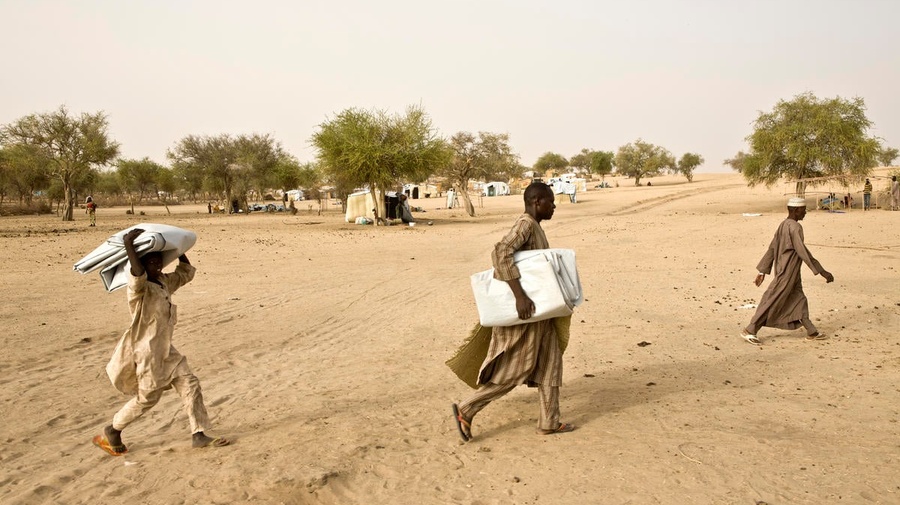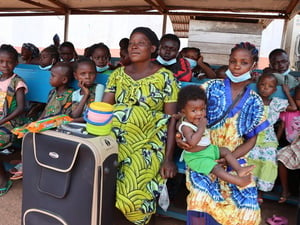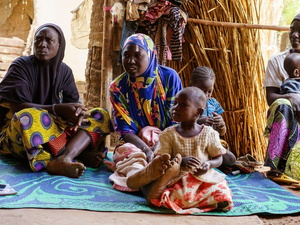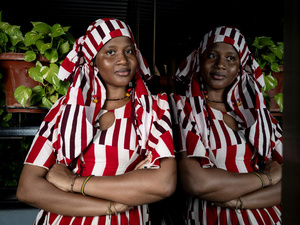Sahel emergency
Sahel emergency
The Sahel region is undergoing a deep transformation which calls for an adjustment in humanitarian engagement to address the worsening crisis characterized by escalating forced displacement and increased protection needs.
Countries affected: Burkina Faso | Mali | Mauritania | Niger
refugees and asylum-seekers forced to flee their countries
are internally displaced in the Sahel region
of forcibly displaced people in the Central Sahel are displaced within their own countries
The countries of the Sahel region are facing a deepening protection crisis driven by conflict, insecurity, and climate shocks, resulting in both protracted and new displacement
While some areas have seen localized improvements in humanitarian access, widespread violence by non-state armed groups, gender-based violence, food insecurity, and the worsening impacts of climate change continue to uproot families across the region. Nearly 3 million people are internally displaced, and hundreds of thousands more have sought asylum or refuge in neighboring countries, including Mauritania, Niger, and the Gulf of Guinea states.
Many of those returning or transiting through the region face renewed protection risks, including attacks, forced recruitment, and severe restrictions on movement - particularly affecting women and children. In 2024, over 127,000 Burkinabes fled to southern coastal countries, while over 320,000 Malian refugees remained in host countries with limited access to durable solutions. UNHCR, working alongside national authorities and more than 25 partners, provided cash assistance, legal aid, and psychosocial support to displaced communities, while advocating for regional cooperation, inclusion in national systems, and long-term solutions rooted in the Sahel+ Strategy.
Protracted crisis: UNHCR may designate some situations as protracted crises. This is an informal classification that indicates a long-term crisis with widespread and deepening humanitarian needs. Burkina Faso, Mali, Mauritania and Niger fall into this category. Learn more about UNHCR emergency classifications.
I was so frightened. The whole family – including my grandmother, aunt, and my husband’s brothers and sisters – met up and left the village. We set off on foot without any belongings. There were about 40 of us, and it took us 20 hours to reach Ouahigouya.
What is UNHCR doing to help?
In response to the growing protection crisis across the Sahel+ region, UNHCR is delivering life-saving assistance while laying the groundwork for long-term solutions. In 2024, the agency provided cash assistance to over 186,000 forcibly displaced people, enabling families to meet their most urgent needs with dignity and flexibility. This immediate support is complemented by the distribution of core relief items, access to shelter, and essential services in areas affected by conflict and instability.
Protection remains at the heart of UNHCR’s response. The agency works closely with partners to monitor and address serious protection risks, including violence, forced recruitment, and severe movement restrictions - risks that disproportionately affect women and children. Legal aid and advocacy efforts are helping asylum-seekers gain access to protection and status, including through initiatives like Ghana’s prima facie recognition of Burkinabe refugees. UNHCR also supports regional dialogue on refugee protection, notably through the Lomé Dialogue, which brings together governments from the Gulf of Guinea and the Sahel to coordinate protection responses and uphold the principle of non-refoulement.
Looking beyond the emergency, UNHCR is working to build resilience and promote durable solutions. The agency focuses on fostering self-reliance from the onset of displacement through skills training, livelihoods support, and the inclusion of refugees in national systems - particularly in health, education, and social protection. In an increasingly urban displacement context, these efforts are critical to strengthening local capacities and ensuring sustainable integration.










